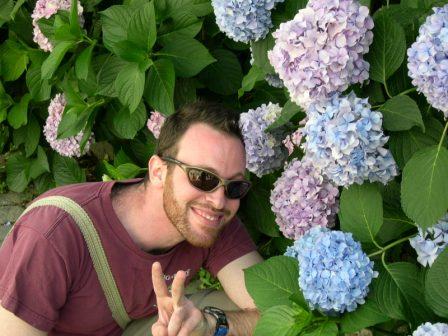A Lark or an Owl, my genes decide
I dont commission the research, I just report it.....
Swab test to tell if you're a late sleeper or early riser
By Roger Highfield, Science EditorA simple genetic test could reveal if someone has a body clock that is badly out of step with the ones that tick in other people, so they can refute charges of sloth. Revealing a genetic propensity to like lie-ins, burn the midnight oil or get up at the crack of dawn can also be crucial for shift workers, since most human-made disasters, such as Chernobyl, the Titanic or the Exxon Valdez oil spill, take place in the early hours, when "lark types" are particularly likely to make mistakes. The pioneering cheek swab test was demonstrated by researchers from the School of Medicine, Swansea University on visitors to the Cheltenham Science Festival yesterday. The swabs, which collect cells from inside the cheek, can now be used to identify their natural sleep-wake pattern. Discussions are now under way with Boots to develop an over the counter version, where the swabs are sent off for testing. "The novel technique we have developed at Swansea is entirely non-invasive, so we can use it at a public event", explains Dr Sarah Forbes-Robertson, who did the work with Dr Adeel Siddiqui and Ms Alison Baird at Swansea University. "Previously you needed to take blood sample. Our technique allows us to get a useable sample just by swabbing the inside of an individual's cheek." In recent years, scientists have found that genes can influence a person's preference for rising extremely early, when they are known as "a lark", or late in the day, "an owl". Now the simple test to diagnose people's use of these genes at different times of day has been devised which can help assess whether jet lag cures, such as melatonin tablets, actually do anything. In the longer term, it could help develop new treatments. The test can reveal the activity of a number of different genes that control an individual's 'natural' pattern of wake and sleep - circadian rhythm - that is set by the "body clock." The instructions in the clock genes are carried out in the cell by a kind of genetic material called RNA and testing for the RNA levels shows how active clock genes are at different times of day. One gene, known as Per2, produces the highest levels of RNA at around 4am, and is the gene that is associated with sleeping. "One interesting finding is that food affects gene expression, so after lunch Per2 has a small peak, leading to that post lunch slump," says Dr Forbes-Robertson. Like any curious scientist, she has tested her own circadian rhythms. "My peak of Per2 - the 'sleep' gene - is at 6am rather than at the usual 4am. So I really do have a genetic excuse for not being able to manage early morning meetings." Another gene examined at the festival, known as REV-ERB, seems to work in opposition to Per2 having its peak activity at around 4pm, and is thought by researchers at Swansea to be the gene associated with wakefulness. Festival goers were invited to take part in an experiment to test this. "To get a full and accurate picture of someone's natural circadian rhythm you would need to take samples four hourly over a full day and night, and also look at all the genes involved," explains Dr Forbes-Robertson. "But by taking samples at 4pm and 5pm to assess the activity of the REV-ERB gene, we will be able to see if patterns of peak gene expression are shifted forwards or back in time from the norm of 4pm. "If your peak is earlier than 4pm it would indicate that you are a natural early bird, if you peak later than 5pm then you are more of a night owl." One key finding from this work, now in use by Prof Johannes Thome's research team in the Department of Neuroscience and Molecular Psychiatry at Swansea, is that humans differ significantly to mice, even though they are very similar at a genetic level. "It has always been assumed that human genes would work in the same way as those for mice where two genes Per2 and Bmal1 work in opposition, Per2 peaking for sleep and Bmal1 peaking for wakefulness. However, in humans these genes appear to work together with both peaking around the same time," she says. The researchers are now looking at various conditions such as Attention Deficit Hyperactivity Disorder to see if this may be linked to disturbed circadian rhythms. Further work is being carried out to identify if the activity of these genes can be permanently altered through unnatural sleep patterns - in shift work, for example. "Gene expression can be altered by external factors, such as jet lag", says Dr Forbes-Robertson. "That is why jet lag is only temporary." The technique may also have applications in other areas of research. "It has been suggested that chemotherapy for cancer patients may be far more effective if administered at certain times of the day. Our techniques might be able to confirm this and explain why", says Dr Forbes-Robertson. Earlier work by Prof Till Roenneberg of Ludwig Maximilians University, Munich, found that the traditional classification of people as either "larks", who like to rise and retire early, and "owls" who are slow risers and burn the midnight oil, is too simplistic. People fall into a spectrum of "chronotypes" between these extremes, depending on a range of factors, notably their genetic makeup and the amount of light they are exposed to during a day, which is much less than many people realise. |
Information appearing on telegraph.co.uk is the copyright of Telegraph Media Group Limited.
http://www.telegraph.co.uk/earth/main.jhtml?view=DETAILS&grid=&xml=/earth/2008/06/06/sciclock106.xml


0 Comments:
Post a Comment
<< Home